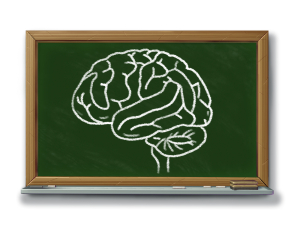 “Name It To Tame It and Say You’re Sorry”
“Name It To Tame It and Say You’re Sorry”
In my last blog, I discussed the author of Brainstorm’s views on emotional spark. You see, adolescents really do experience things differently, on a brain science level. Dr. Siegel discusses the five sections of the brain and teaches us how to use our own hand to create a model of the brain. For this topic, we can effectively use the human hand to understand two major brain regions. If you were to close your four fingers around your tucked in thumb, then your thumb can be thought of as the much older, on an evolutionary scale, limbic system, and the fingers would represent the prefrontal cortex.
On page 107 of Brainstorm, we see that, “Brain scans reveal that when teens are shown a neutral face in a photograph, a major area of the limbic region, the amygdala (your thumb), becomes activated, whereas in adults the same photograph merely activates the reasoning prefrontal cortex (your fingers). The result for teens can be an inner sense of conviction that even another person’s neutral response is filled with hostility and he cannot be trusted.”
The healthy brain utilizes all five regions to respond to outside stimuli, only remember that during the ages of twelve to twenty-four, those regions are in the process of being integrated together. Both adolescent and adult brains have an amygdala reaction, only the routes the information takes differs depending on the level of integration that has been achieved. The amygdala is, as stated in the above site, “linked to emotions and aggression. The amygdala functions to control fear responses, the secretion of hormones, arousal and the formation of emotional memories.” A healthy adult brain uses a slower route to the amygdala, while the teens “may simply have a more immediate emotional response that is not filtered by cortical reasoning” (pg. 107).
This faster route to emotional spark is not limited to human adolescents, it is seen all over the mammalian world. “The biology of decreased fear, greater interest in novelty, and impulsivity serve a purpose across species.” (pg. 108) I find it fascinating what brains scans reveal about teen and adult limbic activity when being exposed to the same exact stimuli. I find it more fascinating that science shows we can learn to manage the youthful amygdala response by naming it while it is happening. The emotional spark impulse is not just natural, it is essential for developing an individual who can one day become more confident and independent. Emotions have to be honored, and can be harnessed. It turns out that when an emotion is acknowledged, it can be managed. “There are even some brain studies that show how this naming process can activate the prefrontal cortex and calm the limbic amygdala!” (pg. 108)
There are two things I do to help my adolescent students manage their emotions in the classroom while encouraging their future vitality through not squashing emotional spark:
One: I acknowledge in myself that brain science shows adolescents have a fast track to getting worked up, upset, and even offended. I do my best to honor their glowing amygdalae and I am quick to apologize when they express being wronged. I have seen many “grown-ups” fail at this. Drop the ego big people, and say you’re sorry. I’d love to see a scan of a teen’s brain hearing an adult apologize.
Two: I teach the kids I work with how to name their emotions. One example of a “name it” situation is when two kids are quarreling. When there’s an argument, I don’t take the legal route, or try to find out who is to blame, I simply ask each student to state how they’re feeling. The reaction to naming their feelings is often the same, and what may seem to the uneducated (in adolescent behavior or brain science), to be a dispute that is unacceptable behavior, actually transforms into another formative experience on the way to cerebral integration.
Thank you for reading and for sharing.
Nicholas Philliou, 7th grade humanities teacher in Durango, Colorado
Image Credit: Lightspring / Shutterstock.com













Leave a Reply